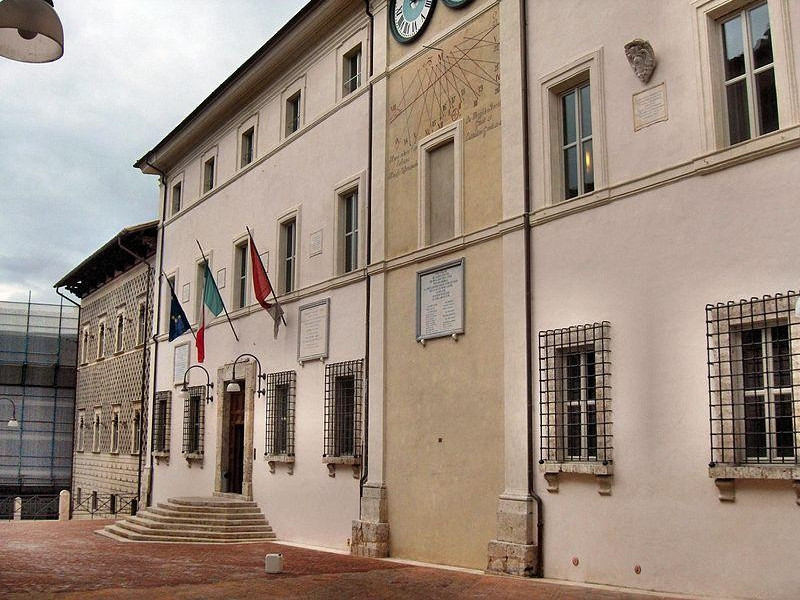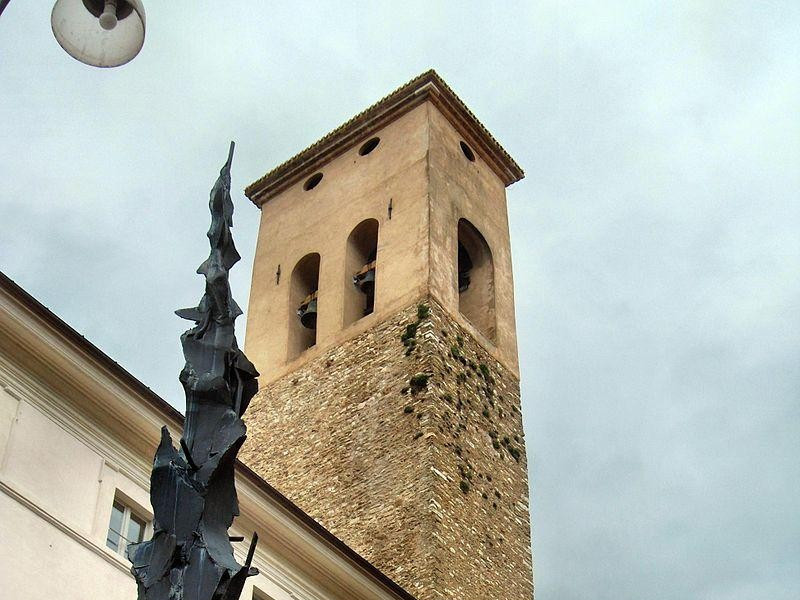Palazzo Comunale
Its foundations are based on the area of a Roman domus discovered by Giuseppe Sordini in 1885. After extensive renovations, completed in 2007, now it houses the institutional bodies and politicians of the city. The oldest part of the building (XIII century) is the tower in the south facade; extensions and improvements have taken place in the fifteenth century were made possible through the efforts of Pope Nicholas V, whose family lived in the city. The entire building was damaged in the earthquake of 1703. In 1784, it resolves to complete the restoration work, but the final unification takes place in 1913, when the adjacent Brancaleoni Palace is incorporated to increase workspaces. The north facade, designed by Pietro Ferrari, overlooking the steps of Duomo Square and is adorned with coats of arms and inscriptions relating to important personalities who ruled the city in the seventeenth and eighteenth centuries. The south facade, designed by Francesco Angelo Amadio, is preceded by a wide staircase, and is joined on the left to the Brancaleoni Palace in neo-Gothic decorations by Giuseppe Moscatelli and Benigno Peruzzi, who are also attributed most of the decorations the interior rooms. In the Hall of the Spain you can admire the "Madonna and Child with Saints". In front of the south facade, since 1962 it has placed the sculpture in iron and steel by Nino Franchina, entitled "Spoleto '62". The birth of the Municipal Art Gallery dates back to the sixteenth century, a first group of art historical material are added over time paintings, artistic furniture and fabrics. The formation of a true civic collection of works of art was made by Pietro Fontana. At the end of the 80s works are transferred to the Rosari-Spada palace. After restructuring in 2007, some of them are back in the state rooms of the Town Hall.


